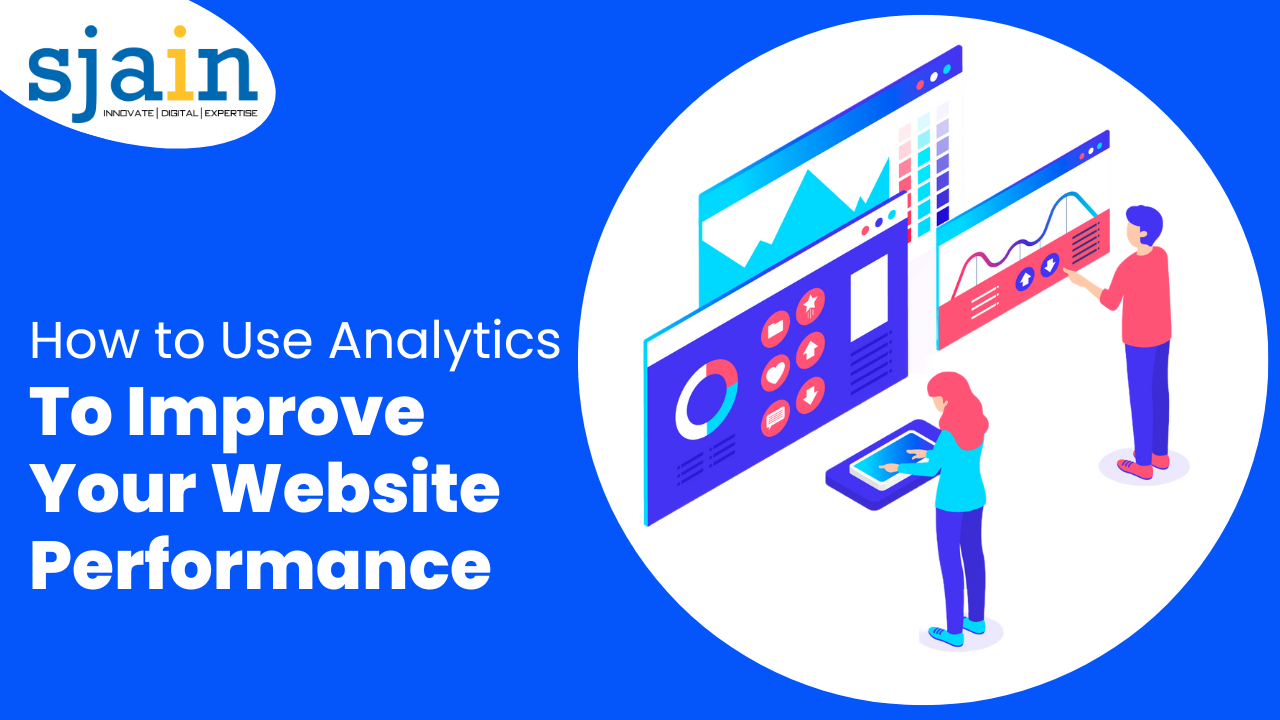How to Use Analytics to Improve Your Website
A web page for your company is not just an option in the modern digital world; it is a requirement. With increasing competition, it’s essential to ensure that your website is performing at its best. Analytics is a useful tool for measuring the performance of your website, identifying areas for development, and making data-driven decisions. We’ll look at how to make use of analytics to enhance the performance of your website.
Are you struggling to improve your website’s performance? Are you unsure of how to measure the success of your website? Analytics can help you make decisions to improve your website’s performance.
What is Analytics?
Analytics refers to the process of collecting and analyzing data to gain insights and make data-driven decisions. Analytics in connection with a website entails tracking user behavior, such as viewing pages, rates of click-through, and conversion rates, in order to gather insights into how users interact with the website. Analytics tools collect data on user behavior, and this data is used to improve your website’s performance.
The Benefits of Using Analytics. Using analytics can provide numerous benefits for your website, including:
Identify Website Performance Issues
Analytics can help you identify website performance issues, such as slow-loading pages or high bounce rates, and take corrective action.
Measure Website Success
Analytics may assist you in measuring the success of your website by providing information such as the number of clients, the time they stay on your site, or the conversion rate.
Understand User Behavior
Analytics may help to clarify how your website visitors engage with it, including which pages they browse, how long they stay on each website, and what links they click.
Make Data-Driven Decisions
Analytics can help you make data-driven decisions based on user behavior, such as what content to create, which pages to optimize, and which marketing channels to focus on.
How to Use Analytics to Improve Your Website Performance
For using analytics to boost the performance of your website, follow these steps:
Set Up Analytics
The first thing to do is to install a website analytics program. Google Analytics is a popular free tool that can help you track user behavior on your site.
Identify Website Goals
The next step is to identify your website goals. What do you want visitors to do on your website? Do you want them to buy a product, fill out a form, or contact you? Identifying your website goals will help you measure the success of your site.
Track User Behavior
Analytics tools can help you track user behavior on your website, such as the pages they visit, how long they stay on each page, and which links they click. This data can help you identify areas of improvement on your website.
Analyze Data
Once you have collected data, it’s time to analyze it. Look for patterns and trends in user behavior, such as which pages have high bounce rates or low conversion rates. Use this data to identify areas of improvement.
Take Corrective Action
Once you have identified areas of improvement, it’s time to take corrective action. This could involve optimizing your website’s design, improving page speed, or creating new content to address user needs.
Best Analytics Metrics to Track
To improve your website’s performance, you should track the following analytics metrics:
Traffic Sources
Understanding where your traffic is coming from can help you identify which marketing channels are working and which ones need improvement.
Bounce Rate
Bounce rate measures the percentage of visitors who leave your website after viewing only one page. A high bounce rate indicates that visitors are not finding what they are looking for on your website.
Conversion Rate
The conversion rate measures the percentage of visitors who take the desired action on your website, such as buying a product or filling out a form. Tracking your conversion rate can help you identify areas where you can optimize your website to improve conversions.
Page Load Time
Page load time is the time it takes for your website to load. Slow-loading pages can negatively impact user experience and increase bounce rates. Tracking page load time can help you identify areas where you can improve your website’s performance.
Exit Pages
Exit pages are the pages where visitors leave your website. Tracking exit pages can help you identify areas where visitors are leaving your website and take corrective action.
Using A/B Testing to Improve Website Performance
A/B testing is a valuable technique that can help you improve your website’s performance. A/B testing involves creating two versions of a web page and showing each version to a different group of users. By comparing the performance of the two versions, you can determine which one is more effective.
When conducting A/B testing, it’s important to test one element at a time, such as the headline, call-to-action, or images. This will help you determine which specific element is causing the difference in performance.
Conclusion
Analytics is a useful tool for improving the performance of your website. You can identify areas for development and take steps to rectify them by watching user behavior, and analyzing data while making data-driven decisions. Remember to track the right metrics, set goals, and conduct A/B testing to continuously improve your website’s performance. With these tips, you can create a website that engages visitors, drives conversions, and delivers results.

